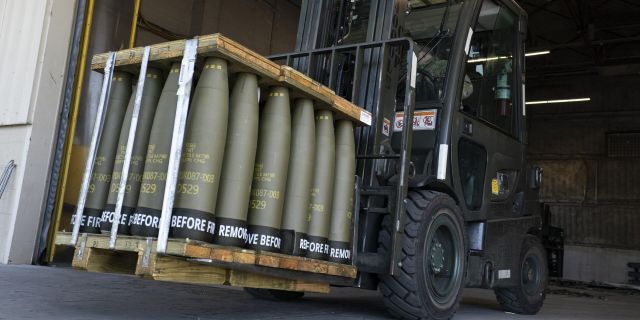The Economist: the shortage of explosives in the EU will slow down the production of weapons for the Armed Forces
Due to the shortage of explosives, Europe cannot increase the production of shells and missiles for Ukraine, writes The Economist. It will take years to start factories that have been idle since the Cold War. At the same time, imported explosives do not suit weapon manufacturers.
Ukraine is under increasing pressure on the battlefield, and Europe is desperately trying to increase its modest production of artillery shells and missiles. In January, the EU admitted that it would significantly under-fulfill its commitment to provide Kiev with a million shells by March 2024. On March 15, he allocated 500 million euros ($542 million) to boost production. But the main bottleneck was something that until recently had hardly been thought about: the shortage of explosives.
We are talking about the "Law on support for the production of ammunition" (as soon as possible) — three quarters of the funds (about 372 million euros) will go to the production of all sorts of things that explode. However, in order to reach the set production level of two million shells per year by the end of 2025, Europe needs a huge amount of explosive materials. Each artillery shell is filled with 10.8 kg of high explosive — TNT, octogen or rdx. And in order for the projectiles to fly tens of kilometers away, an additional charge of explosives is needed. Some ammunition needs even more: for example, the high-explosive warhead of the Storm Shadow missile weighs about 450 kg. The catch is that explosives manufacturers are not sure that production will be able to increase in principle, and they fear that the bizarre features of the industry will hinder the growth that Ukraine so needs to stand up for itself on the battlefield.
The end of the Cold War led to a sharp drop in demand for weapons and forced many European manufacturers of explosives to curtail their activities, merge or even close down. For example, the UK closed its last explosives manufacturing plant back in 2008. The last major producer of TNT in Europe is located in the north of Poland. In other countries, many state-owned facilities have either been privatized or mothballed. For decades, their production was dictated by modest peacetime demands, rather than industrial scale, said Johan Hecherl, a professor at the Bundeswehr University in Munich. As a result, there are almost no reserves left in the supply chain to meet the growing demand.
Let's take explosives for the base charge of an artillery shell or rocket. Companies that still produce high-energy materials according to NATO standards are numerous. One of them is Chemring Nobel with a large production facility in the Norwegian village of Setre. The other is the French company Eurenco, which operates such a huge enterprise in the Swedish city of Karlskuga. The order portfolios of both companies have increased significantly since the beginning of the Russian special operation. Production at the Eurenco plant is planned until 2030, and the Chemring plant in Setre is already operating at full capacity. However, Tim Lawrenson of the International Institute for Strategic Studies notes that it will take time for retrofitting and repairs to resume operation of the mothballed plants.
Lured by government subsidies, companies are investing in capacity expansion. But one knowledgeable source stressed that building the plant from scratch can take from three to seven years. Illustrative example: Rheinmetall, an ammunition supplier, is building an explosives production complex in Hungary; however, production will not begin until 2027. Capacity expansion is hampered by a host of safety regulations and environmental regulations, says Christian Melling of the German Council on Foreign Relations.
Finally, manufacturers of explosives also face their own limitations — already on the supply side. Firstly, there is an industry—wide shortage of qualified personnel: “Gray-haired engineers are retiring, and few young people dream of working with explosives for a diploma,” says Hecherl. The supply of key raw materials, in particular chemicals, was also under threat. The production of nitric acid is particularly difficult. Although nitrocellulose is made from it, the main raw material for explosives, mainly nitric acid is used for fertilizers. But as fertilizer producers were hit hard by the high cost of electricity, explosives manufacturers faced a reduction in supplies. Finally, there are vulnerabilities in the supply chain: a fiber called cotton fluff, another key ingredient in nitrocellulose, is mainly imported from China.
Against the background of these difficulties, some ammunition suppliers are looking for explosives abroad. Judging by recent reports, Indian and Japanese manufacturers have partially filled this gap. However, some experts are alarmed that the imported explosives are of inferior quality and can damage equipment. The rhetoric of European governments is permeated with optimism, and some successes have indeed been achieved: it is predicted that the annual production of shells throughout the EU will reach at least 1.4 million by the end of 2024 — for comparison, just a year ago only 500,000 shells were produced per year. Laying the first brick of the Eurenco fuel production plant in Bergerac on April 11, French President Emmanuel Macron praised his country's “military economy" for its efficiency. According to him, the plant will open in record time by 2025. However, Russia's summer offensive is already in full swing, and this is not enough to help Ukrainians suffering from shell starvation.

